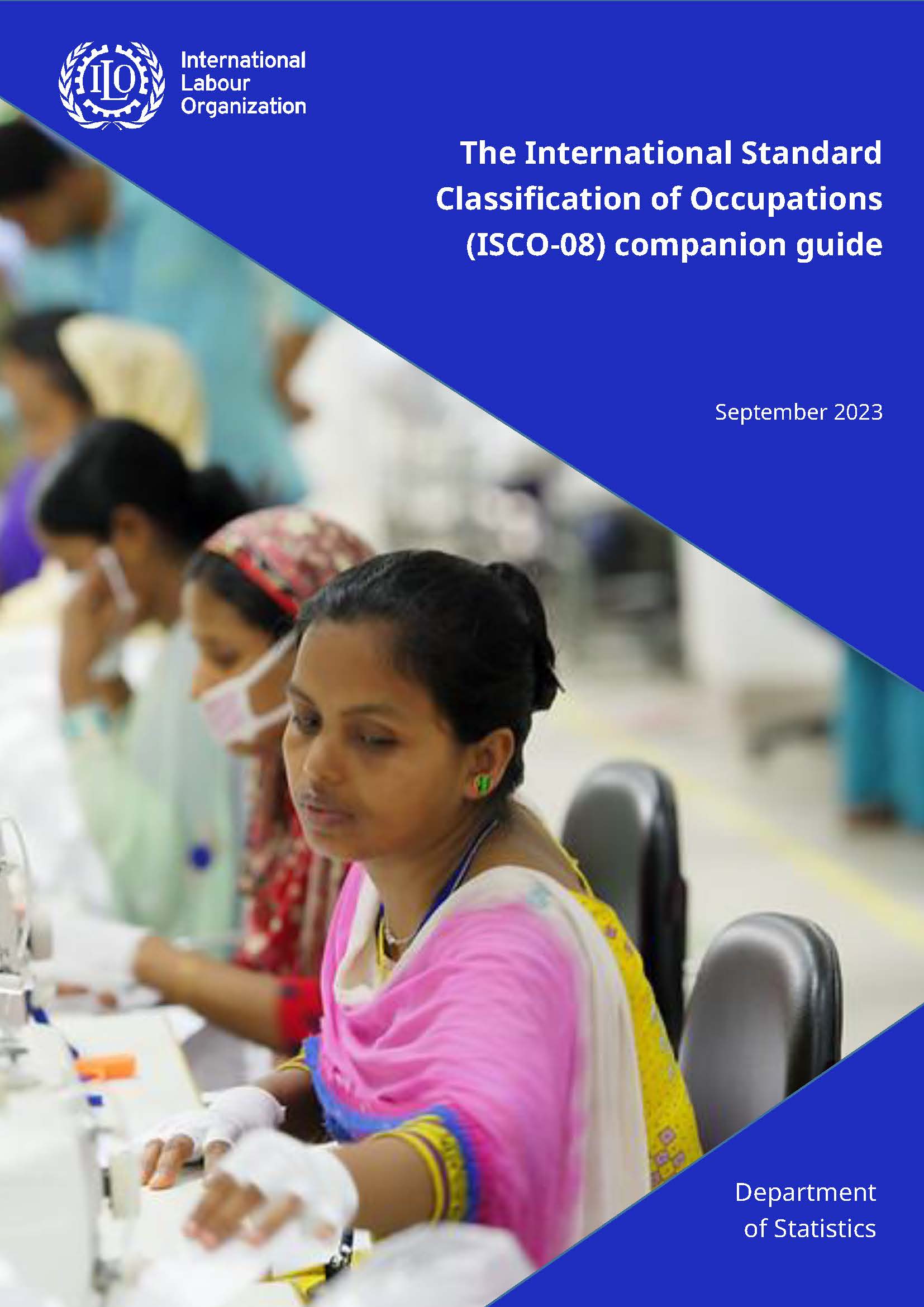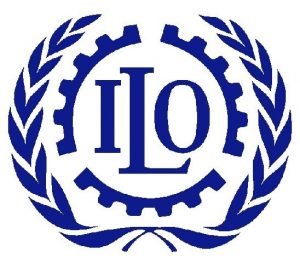Table of Contents
Introduction
The International Classification of Occupations (ISCO) seeks to facilitate international communication about occupations by providing statisticians with a framework to make internationally comparable occupational data available, and by allowing international occupational data to be produced in a form that can be useful for research as well as for specific decision-making and action-oriented activities.
The current version, known as ISCO-08, was published in 2008 and is the fourth iteration, following ISCO-58, ISCO-68 and ISCO-88.
Definitions
A job is defined in ISCO-08 as “a set of tasks and duties performed, or meant to be performed, by one person, including for an employer or in self employment”.
Occupation refers to the kind of work performed in a job. The concept of occupation is defined as a “set of jobs whose main tasks and duties are characterized by a high degree of similarity”. A person may be associated with an occupation through the main job currently held, a second job, a future job or a job previously held.
Skill is defined as the ability to carry out the tasks and duties of a given job. For the purposes of ISCO-08, two dimensions of skill are used to arrange occupations into groups. These are skill level and skill specialization.
Skill level is defined as a function of the complexity and range of tasks and duties to be performed in an occupation. Skill level is measured operationally by considering one or more of:
- the nature of the work performed in an occupation in relation to the characteristic tasks and duties defined for each ISCO-08 skill level;
- the level of formal education defined in terms of the International Standard Classification of Education (ISCED-97) (UNESCO, 1997) required for competent performance of the tasks and duties involved; and
- the amount of informal on-the-job training and/or previous experience in a related occupation required for competent performance of these tasks and duties.
Structure
Looking at the hierarchical structure of ISCO-08 from the top down, each of the ten major groups is made up of one or more sub-major groups, which in turn are made up of one or more minor groups. Each of the 130 minor groups is made up of one or more unit groups. In general, each unit group is made up of several “occupations” that have a high degree of similarity in terms of skill level and skill specialization.
Each group in the classification is designated by a title and code number and is associated with a description that specifies the scope of the group.
- Major Group is denoted by a 1-digit code; for example 2 Professionals
- Sub-Major Group is denoted by a 2-digit code; for example 22 Health Professionals
- Minor Groups are denoted by 3-digit codes; for example 221 Medical doctors
- Unit Groups are denoted by 4-digit codes; for example 2211 Generalist Medical Practitioners
Number of groups at each level
| Major Groups | Sub Major Groups | Minor Groups | Unit Groups | Skill level |
|---|---|---|---|---|
| 1 Managers | 4 | 11 | 31 | 3 and 4 |
| 2 Professionals | 6 | 27 | 92 | 4 |
| 3 Technicians and Associate Professionals | 5 | 20 | 84 | 3 |
| 4 Clerical Support Workers | 4 | 8 | 29 | 2 |
| 5 Service and Sales Workers | 4 | 13 | 40 | 2 |
| 6 Skilled Agricultural, Forestry and Fishery Workers | 3 | 9 | 18 | 2 |
| 7 Craft and Related Trades Workers | 5 | 14 | 66 | 2 |
| 8 Plant and Machine Operators, and Assemblers | 3 | 14 | 40 | 2 |
| 9 Elementary Occupations | 6 | 11 | 33 | 2 |
| 0 Armed Forces Occupations | 3 | 3 | 3 | 1, 2 and 4 |
| Total number of groups | 43 | 130 | 436 |
Find an occupation in ISCO-08
Use the search function to find an occupation (tips: use the drop-down to select which columns to search and use quotes around a term, for example “nurse”, for more precise search results). In the table of results, click on the + sign to the left of the occupation title to learn more.
Related downloads
-
ISCO-08 Index in Excel formatISCO-08 Index in Excel format
-
Excel file with ISCO-08, -88, -68, -58 and skill levelsExcel file with ISCO-08, -88, -68, -58 and skill levels
-
CSV file with ISCO-08, -88, -68, -58 and skill levelsCSV file with ISCO-08, -88, -68, -58 and skill levels
-
ISCO-08 AR StructureISCO-08 AR Structure
-
Correspondance ISCO-08 to ISCO-88Correspondance ISCO-08 to ISCO-88
-
Correspondance ISCO-88 to ISCO-08Correspondance ISCO-88 to ISCO-08
Skill levels
Statistics by occupation are presented in ILOSTAT according to both the categories of the latest version of the ISCO available and broad skill levels, based on the following correspondence table:
| Broad skill level | ISCO-08 | ISCO-88 |
|---|---|---|
| Skill levels 3 and 4 | 1. Managers | 1. Legislators, senior officials and managers |
| 2. Professionals | 2. Professionals | |
| 3. Technicians and associate professionals | 3. Technicians and associate professionals | |
| Skill level 2 | 4. Clerical support workers | 4. Clerks |
| 5. Service and sales workers | 5. Service workers and shop and market sales workers | |
| 6. Skilled agricultural, forestry and fishery workers | 6. Skilled agricultural and fishery workers | |
| 7. Craft and related trades workers | 7. Craft and related trades workers | |
| 8. Plant and machine operators, and assemblers | 8. Plant and machine operators and assemblers | |
| Skill level 1 | 9. Elementary occupations | 9. Elementary occupations |
| Armed forces | 0. Armed forces occupations | 0. Armed forces |
| Not elsewhere classified | X. Not elsewhere classified | X. Not elsewhere classified |
NEWS: The forthcoming revision of ISCO
ISCO-08 is currently being revised. This revision is undertaken by a Technical Working Group (TWG) and the ILO statistics department. The objectives of the revision are:
- To maintain ISCO up-to-date, following the changes happening in the world of work by revising and improving ISCO skill model and structure,
- To modernize ISCO.
The history of ISCO
In addition to ISCO-08, three versions of ISCO were developed in the past. The first complete version of ISCO was adopted in 1957 by the Ninth International Conference of Labour Statisticians (ICLS), it is known as ISCO-58. ISCO-58 was superseded by ISCO-68, which was adopted by the Eleventh ICLS in 1966. The third version, ISCO-88, was adopted by the Fourteenth ICLS in 1987.
Distinctions between different occupational classes were introduced in population censuses undertaken in the early parts of the 19th century in several countries, but the identification of occupation and industry as different variables, each requiring its own classification, was only made towards the end of that century, as it became increasingly clear that the division of labour between firms and organizations in an industrial society was distinct from the division of labour between different jobs within the same firm.
The history of the development of ISCO has always been closely connected with the work of the International Conference of Labour Statisticians (ICLS) which meets under the auspices of the International Labour Organization (ILO).
The need for an international standard classification of occupations was, in fact, discussed at the first ICLS in 1923, although this conference did not propose a specific grouping of occupations. The first concrete step towards its establishment was the adoption, by the Seventh ICLS in 1949 of nine major groups termed the International Standard Classification of Occupations. The seventh ICLS proposed further development of this classification to more detailed level and identified basic principles to be followed in the collection and tabulation of occupational data, including that:
- the basis of any classification of occupations should be the trade, profession or type of work performed by an individual, irrespective of the branch of economic activity to which he or she is attached or of his or her status in employment;
- proprietors or owners who mainly perform the same work as that performed by employees in their own or in a similar enterprise should be allocated to the same group to which the employees are allocated.
In 1952, the ILO published the International Classification of Occupations for Migration and Employment Placement (ICOMEP), with descriptions of 1727 occupations based on national reference materials sourced principally from 13 countries, and organized within the framework of the nine major groups adopted by the Seventh ICLS.
In 1954, the Eighth ICLS approved a list of minor groups which was subsequently submitted to the governments and to a group of experts for comments.
In 1957, the Ninth ICLS adopted the first complete version of the International Standard Classification of Occupations known as ISCO-58 and comprising a classification structure of 10 major groups, 73 minor groups, 201 unit groups, 1345 occupations and an index of occupational titles. All groups at each level of the classification were given a unique code, title and description, drafted in consultation with the governments. It was published in 1958.
The Ninth ICLS also proposed a prompt revision of ISCO-58. In 1965, a working party examined proposals made on the basis of comments from about 80 countries and ten international organisations concerning the classification. This facilitated the development of a draft classification which was discussed, amended and adopted as ISCO-68 by the Eleventh ICLS in 1966. ISCO-68 consists of 8 major groups, 83 minor groups, 284 unit groups and 1506 occupational categories. It includes definitions for each of the 1881 groups describing the general functions of the occupations as well as the main tasks performed by the workers concerned. It includes an expanded alphabetical list of several thousand titles as well as a table of conversion from ISCO-58 to ISCO-68. The English and French versions were published in 1969 and the Spanish version in 1970.
The third edition of ISCO (ISCO-88) was adopted by the 14th ICLS in 1987 and approved by the ILO Governing Body in 1988. The major changes introduced were that:
- the underlying principles and concepts were made more explicit than in the previous versions;
- skill level and skill specialization were identified as the main similarity criteria for arranging occupations into groups; and
- the 10 major groups, 28 Sub-major groups, 116 minor groups and 390 unit groups in ISCO-88 provide much less detail than its predecessors, because experience had shown that it was very difficult to develop a comprehensive set of detailed categories that are applicable to all countries.
Early during the first decade of the 21st century, it became clear that there was a need to update ISCO-88. In December 2003 the 17th ICLS requested that the ILO complete work to update ISCO-88 by the end of 2007 so that the results could be taken into account in national preparations for the majority of population censuses to be undertaken in the 2010 round. The updated classification, ISCO-08 was adopted by a Meeting of Experts in Labour Statistics in December 2007.
Whilst it employs a similar conceptual model to that used for ISCO-88, and the 10 major groups were not changed in concept, ISCO-08 is slightly more detailed at its disaggregate levels and comprises 43 sub-major groups, 131 minor groups and 436 unit groups. Like its predecessor, ISCO-08 provides descriptions for all of the categories identified at each of the four levels of its structure, and can be extended by defining detailed occupations if and when required for specific national or regional purposes. ISCO-08 is now being revised.
Download previous ISCO versions
-
ISCO-88 Structure and definitionsISCO-88 Structure and definitions
-
ISCO-68 Structure and definitionsISCO-68 Structure and definitions
-
ISCO-58 Structure and definitionsISCO-58 Structure and definitions
Related working papers
- Coding occupation and industry in a population census (2001)
- International statistical comparison of occupational and social structures: Problems and possibilities and the role of ISCO-88 (1999)
- Constructing a map of the world of work: How to develop the structure and contents of a national standard classification of occupations (1995)
F.A.Q.
ISCO-08 is the current version of the International Standard Classification of Occupations, it is the fourth iteration and replaces ISCO-88. Read more above on the history of ISCO.
Yes, ISCO is available online free of charge and can be used without prior authorization.
- A job is defined in ISCO-08 as “a set of tasks and duties performed, or meant to be performed, by one person, including for an employer or in self employment”.
- Occupation refers to the kind of work performed in a job. The concept of occupation is defined as a “set of jobs whose main tasks and duties are characterized by a high degree of similarity”.
Since the year 1968, the practice is to revise ISCO every 20 years. ISCO revision can only be undertaken if it is mandated by the ICLS. ISCO-08 revision is currently undertaken by the ILO with the assistance of a Technical Working Group (TWG).
Classifications of occupations are used in national contexts for the collection and dissemination of statistics from sources such as population censuses, labour force surveys, other household surveys, employer surveys and other sources. They are used by governments and companies in activities such as matching jobseekers with job vacancies, educational planning, reporting of industrial accidents, administration of workers’ compensation, the management of employment-related migration, etc.
| User | Used in/for |
|---|---|
| Statistical services | Sort/classify jobs and persons into occupations to produce statistics on the occupational distribution of employed persons, wages, working conditions, occupational injuries, etc. |
| Migration authorities | Sort persons to make decisions about work permits or visas |
| Employment services | Sort persons and jobs to match jobs seekers and vacancies |
| Managers of enterprises/organisations | Sort jobs and persons to plan and decide on wage and other personnel policies, and monitor working conditions |
| Vocational counsellors | Use occupational information to guide school leavers and job seekers about types of work, training requirements, career prospects, working conditions, etc. of different types of jobs |
| Vocational training specialists | Use occupational information as basis for planning and designing vocational training programmes |
| Legislators and public sector administrators | Use occupational statistics in support of the formulation and implementation of economic and social policies and to monitor progress with respect to their application, including those covering manpower planning and the planning of education and vocational training |
| Psychologists | Study the relationship between occupations and the personalities and interests of workers |
| Epidemiologists | Use occupations in their study of work related differences in morbidity and mortality |
| Sociologists | Use occupations as an important variable in the study of differences in life styles, behaviour and social positions |
| Economists | Use occupation in the analysis of differences in the distribution of earnings and incomes over time and between groups, as well as in the analysis of imbalances of supply and demand in different labour markets |
| The general public | Use occupational statistics to analyse, describe and learn about what is happening in their countries |
Questions concerning ISCO can be sent by mail to: isco@ilo.org
Publications
Note: Many publications are available only in English. If available in other languages, a new page will open displaying the options on the right.

The International Standard Classification of Occupations (ISCO-08) companion guide
This companion guide provides guidance on the practical aspects of adapting ISCO-08 for national use or developing a national classification related to it.


International Standard Classification of Occupations (ISCO-08), Volume 1: Structure, group definitions and correspondence tables
This volume presents the structure and definitions of all groups in the International Standard Classification of Occupations 2008 (ISCO-08) and their correspondence with ISCO-88.


The role of ILO
The role of the Department of Statistics is to ensure that ISCO fulfils its objectives; it has the mandate and responsibility to:
- Maintain ISCO and submit proposals for its updating or revision for discussion and adoption by the International Conference of Labour Statisticians (ICLS), or by duly authorized meetings of experts and for endorsement by the Governing Body of the International Labour Organization;
- Provide technical support to countries for development, implementation, maintenance, and revision of the classification;
- Prepare and disseminate methods and materials, i.e., explanatory notes, indexes, correspondence tables, and other tools and resources.
Contact us: Questions concerning ISCO can be sent by e-mail directly to: isco@ilo.org
ISCO-88
Major groups
1. Legislators, Senior Officials and Managers
2. Professionals
3. Technicians and Associate Professionals
4. Clerks
5. Service Workers and Shop and Market Sales Workers
6. Skilled Agricultural and Fishery Workers
7. Craft and Related Trades Workers
8. Plant and Machine Operators and Assemblers
9. Elementary Occupations
0. Armed Forces
Major and sub-major groups
1. Legislators, Senior Officials and Managers
11 – Legislators and Senior Officials
12 – Corporate Managers (This group is intended to include persons who – as directors, chief executives or department managers – manage enterprises or organisations, or departments, requiring a total of three or more managers.)
13 – General Managers (This group is intended to include persons who manage enterprises, or in some cases organisations, on their own behalf, or on behalf of the proprietor, with some non-managerial help and the assistance of no more than one other manager who should also be classified in this sub- major group as, in most cases, the tasks will be broader than those of a specialised manager in a larger enterprise or organisation. Non-managerial staff should be classified according to their specific tasks.
2. Professionals
21 – Physical, Mathematical and Engineering Science Professionals
22 – Life Science and Health Professionals
23 – Teaching Professionals
24 – Other Professionals
3. Technicians and Associate Professionals
31 – Physical and Engineering Science Associate Professionals
32 – Life Science and Health Associate Professionals
33 – Teaching Associate Professionals
34 – Other Associate Professionals
4. Clerks
41 – Office Clerks
42 – Customer Services Clerks
5. Service Workers and Shop and Market Sales Workers
51 – Personal and Protective Services Workers
52 – Models, Salespersons and Demonstrators
6. Skilled Agricultural and Fishery Workers
61 – Market-Oriented Skilled Agricultural and Fishery Workers
62 – Subsistence Agricultural and Fishery Workers
7. Craft and Related Trades Workers
71 – Extraction and Building Trades Workers
72 – Metal, Machinery and Related Trades Workers
73 – Precision, Handicraft, Printing and Related Trades Workers
74 – Other Craft and Related Trades Workers
8. Plant and Machine Operators and Assemblers
81 – Stationary-Plant and Related Operators
82 – Machine Operators and Assemblers
83 – Drivers and Mobile-Plant Operators
9. Elementary Occupations
91 – Sales and Services Elementary Occupations
92 – Agricultural, Fishery and Related Labourers
93 – Labourers in Mining, Construction, Manufacturing and Transport
0. Armed Forces
01 – Armed Forces
ISCO-08
Major Groups
1. Managers
2. Professionals
3. Technicians and Associate Professionals
4. Clerical Support Workers
5. Services and Sales Workers
6. Skilled Agricultural, Forestry and Fishery Workers
7. Craft and Related Trades Workers
8. Plant and Machine Operators and Assemblers
9. Elementary Occupations
0. Armed Forces Occupations
Major and Sub-Major Groups
1. Managers
11 – Chief Executives, Senior Officials and Legislators
12 – Administrative and Commercial Managers
13 – Production and Specialized Services Managers
14 – Hospitality, Retail and Other Services Managers
2. Professionals
21 – Science and Engineering Professionals
22 – Health Professionals
23 – Teaching Professionals
24 – Business and Administration Professionals
25 – Information and Communications Technology Professionals
26 – Legal, Social and Cultural Professionals
3. Technicians and Associate Professionals
31 – Science and Engineering Associate Professionals
32 – Health Associate Professionals
33 – Business and Administration Associate Professionals
34 – Legal, Social, Cultural and Related Associate Professionals
35 – Information and Communications Technicians
4. Clerical Support Workers
41 – General and Keyboard Clerks
42 – Customer Services Clerks
43 – Numerical and Material Recording Clerks
44 – Other Clerical Support Workers
5. Services and Sales Workers
51 – Personal Services Workers
52 – Sales Workers
53 – Personal Care Workers
54 – Protective Services Workers
6. Skilled Agricultural, Forestry and Fishery Workers
61 – Market-oriented Skilled Agricultural Workers
62 – Market-oriented Skilled Forestry, Fishery and Hunting Workers
63 – Subsistence Farmers, Fishers, Hunters and Gatherers
7. Craft and Related Trades Workers
71 – Building and Related Trades Workers (excluding Electricians)
72 – Metal, Machinery and Related Trades Workers
73 – Handicraft and Printing Workers
74 – Electrical and Electronic Trades Workers
75 – Food Processing, Woodworking, Garment and Other Craft and Related Trades Workers
8. Plant and Machine Operators and Assemblers
81 – Stationary Plant and Machine Operators
82 – Assemblers
83 – Drivers and Mobile Plant Operators
9. Elementary Occupations
91 – Cleaners and Helpers
92 – Agricultural, Forestry and Fishery Labourers
93 – Labourers in Mining, Construction, Manufacturing and Transport
94 – Food Preparation Assistants
95 – Street and Related Sales and Services Workers
96 – Refuse Workers and Other Elementary Workers
0. Armed Forces Occupations
01 – Commissioned Armed Forces Officers
02 – Non-commissioned Armed Forces Officers
03 – Armed Forces Occupations, Other Ranks







